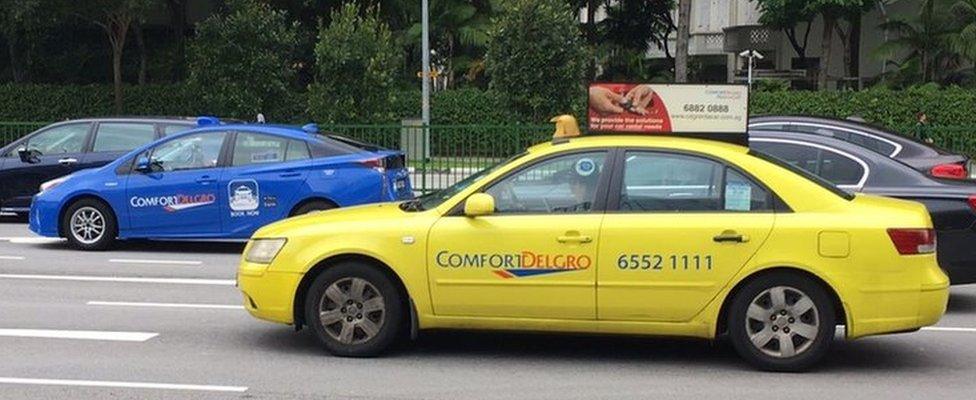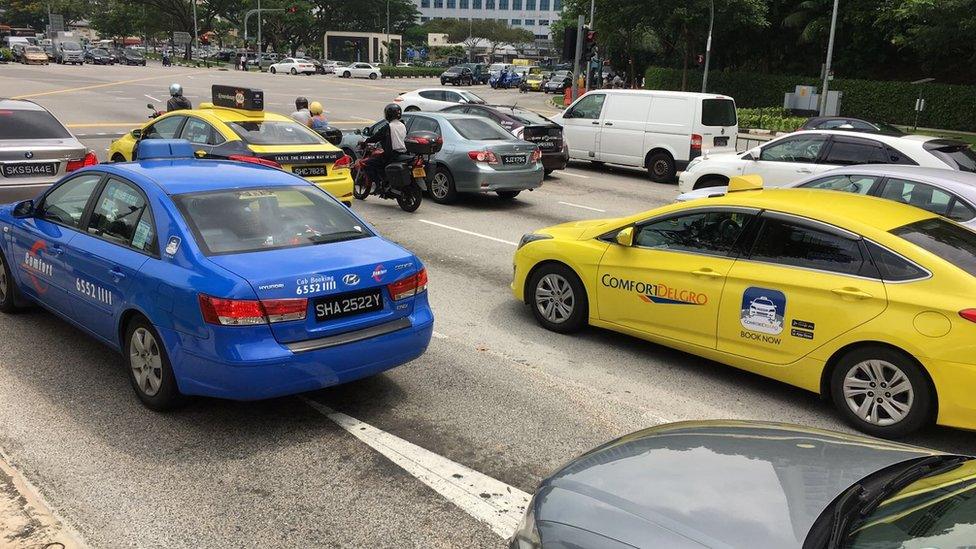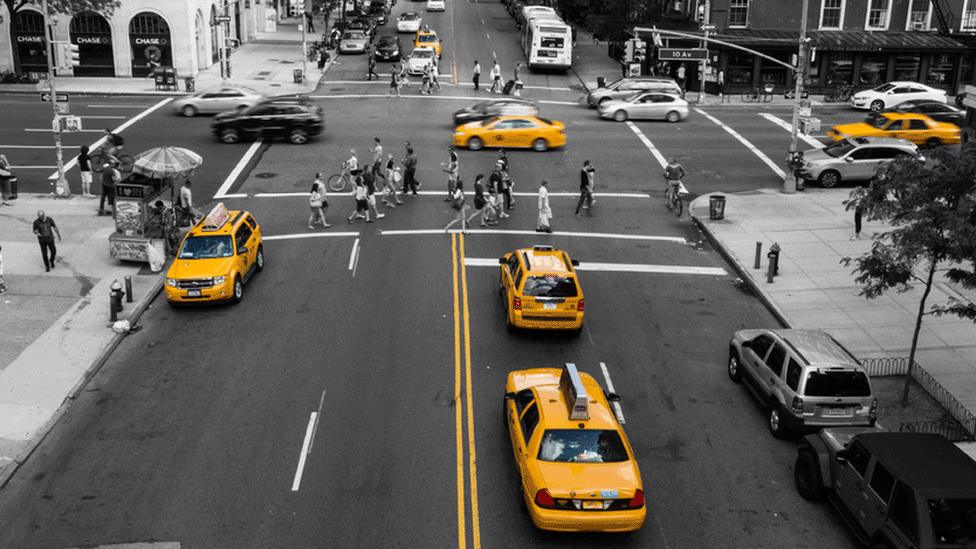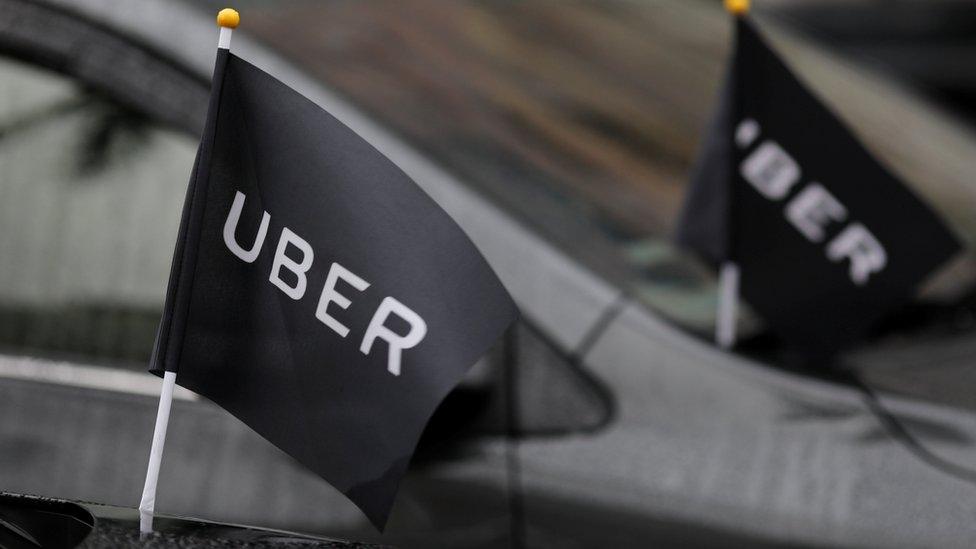Yellow taxis 'have lower accident rate than blue ones'
- Published

Taking a yellow taxi instead of a blue one reduces your risk of an accident, a study in Singapore suggests.
Researchers analysed three years worth of accident data from the city-state's largest taxi operator, whose fleet is predominantly blue and yellow.
It concluded yellow vehicles had about six fewer crashes per thousand taxis each month than their blue equivalents.
The greater visibility of the brighter cars was suggested to be the main reason for fewer accidents.
'Strong link'
The analysis, published in the Proceedings of the National Academy of Sciences, external, used speed monitoring data to rule out other causes of accidents, including the possibility that safer drivers preferred yellow cars.
Researchers said they were keen to "further validate their findings" by looking at the use of yellow in other types of public transport, such as school buses.
"Although there is anecdotal evidence on higher accident rates for dark-coloured vehicles, few studies have empirically established a strong causal link between colour and accident risk," said Professor Ho Teck Hua of the National University of Singapore, who led the research.
"The findings of our study suggest that colour visibility should play a major role in determining the colours used for public transport vehicles. A commercial decision to change all taxis to yellow may save lives and potentially reduce economic losses by millions of dollars."
'Very interesting'
The study reviewed data from 4,175 yellow taxis and 12,525 blue taxis operated by Comfort Delgro. On average, yellow taxis were involved in 6.1 fewer accidents per 1,000 taxis per month - 65.6 compared with 71.7 for blue taxis.
Researchers estimated that by switching the colour of all its taxis to yellow, ComfortDelgro could save S$2m (£1.16m; $1.42m) annually in repair bills and lost revenue.
A spokesperson for ComfortDelgro said: "The findings are very interesting and we will certainly take a closer look at it."

It is not the first time academics have looked into correlation between vehicle colour and accident rates.
A 2003 study, external in Auckland, New Zealand concluded that silver-coloured cars were about 50% less likely to be involved in a car crash resulting in serious injury, than white cars.
That supported research in 2002 from Spain which concluded that cars in light colours were associated with a slightly lower risk of being "passively involved in a collision". That research was based on the Spanish database of traffic crashes from 1993 to 1999.
- Published3 January 2017

- Published25 August 2016

- Published4 March 2017
